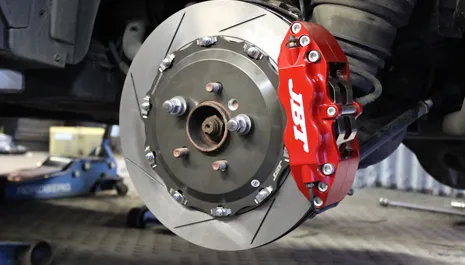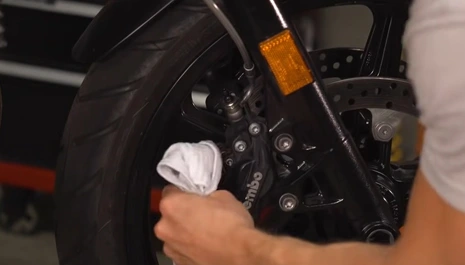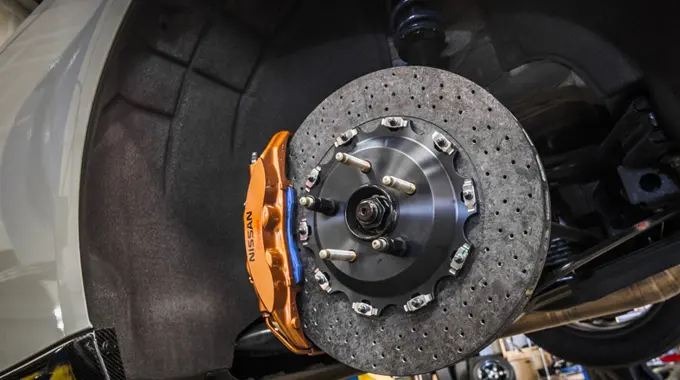Last Updated on March 13, 2023
If your car’s brake system seems to be dragging, or if you’ve noticed a decrease in braking power, it may be time to bleed brakes. Bleeding the brake system will remove any air that has gotten into the lines and restore braking power.
You can do this yourself, but it’s essential to do it safely and correctly. This guide will show you how to bleed a dry brake system quickly and safely and get your car back on the road.
Why Would You Need to Bleed Your Brakes?
There are many reasons why you might need to bleed your brakes. Here are some of the most common reasons:
- You’ve just installed new brakes and need to bleed the lines to eliminate any air bubbles.
- If your brake system has been sitting for some time, it will need to be bled to remove moisture or other contaminants.
- Your car’s brakes seem to be dragging, or you’ve noticed a decrease in braking power. This can be caused by air in the lines, and bleeding the brakes will remove the air and restore braking power.
- Your ABS system is malfunctioning. Bleeding the brakes may help to resolve these issues.
- You’ve noticed a leak in your brake system. Bleeding the brakes may help to stop the leak.
How to Bleed a Dry Brake System in 8 Easy Steps?

Before you start, it’s essential to make sure that you have all the tools and supplies you’ll need.
Materials needed:
- Brake fluid
- Funnel
- Tube clamp or vice grips
- Cable ties
- Clean rags
- Wrench or socket set
- Locking pliers
Now that you have everything you need, let’s get started.
1. Park Your Car on a Level:
Make sure that your car is parked on a level surface so that the brake fluid will flow evenly. This will help to ensure that the brakes are bled evenly.
2. Release the Brakes:
Before you start bleeding the brakes, you need to release the pressure from the system. This can be done by pressing down on the pedal and holding it for a few seconds.
3. Open the Master Cylinder:
The next step is to open the master cylinder. This is usually located under the hood of your car. Once you’ve found it, remove the cap and set it aside.
4. Attach a Tube to the Bleeder Valve:
Next, you’ll need to attach a tube to the bleeder valve. The valve on the brake caliper allows air and fluid to escape. Ensure that the tube is clamped or secured with vice grips so that it doesn’t come loose.
5. Open the Bleeder Valve:
Now it’s time to start bleeding the brakes. Open the bleeder valve and allow the fluid to flow into the tube. Make sure that you’re doing this slowly so that you don’t introduce any air into the system.
6. Close the Bleeder Valve:
Once the fluid has stopped flowing, close the bleeder valve and remove the tube.
7. Repeat:
Repeat this process for each of the brakes on your car. Make sure to check the fluid level in the master cylinder often and add more as needed.
8. Test the Brakes:
Once you’ve bled all of the brakes, it’s time to test them out. Get in your car and slowly press down on the pedal. If the brakes feel firm, then you’re done. If not, repeat the bleeding process until they do.
These are the basic steps for bleeding a dry brake system. Remember always to work safely and cautiously and use the right tools and supplies.
How to Check If you’re Brake Bleed Is Successful?

There are a few ways to check to see if your brake bleed is successful.
The Pedal Feel
The most obvious way to tell if your brake bleed is successful is to check the pedal feel. If the pedal feels firm and solid, then the bleed was successful. If the pedal feels spongy or soft, then you’ll need to repeat the process until all of the air is removed from the system.
Look at the Brake Fluid
Another way to check is to look at the brake fluid. If it’s clear and free of air bubbles, the bleed was successful. If there are still air bubbles in the liquid, you’ll need to repeat the process.
Check for leaks
Finally, you can check for leaks. If there are no leaks, then the bleed was successful. If there are leaks, you’ll need to fix them before driving your car.
Tips for Avoiding Air in Your Brake Lines

Here are a few tips to help you avoid air in your rear brake lines:
- Use a quality brake fluid. This will help to prevent air from getting into the system.
- Be careful when opening and closing the bleeder valves. Make sure that you’re not introducing any air into the system.
- Follow the steps carefully and take your time. Rushing through the process can lead to air bubbles in the brake lines.
- Bleed the brakes in a clean, well-lit area. This will help you to see any leaks that may occur.
- Have a helper watch for leaks while you’re bleeding the brakes. This can help to speed up the process.
- Keep a close eye on the fluid level in the master cylinder. Add more fluid as needed.
- Test the brakes after bleeding them to make sure they’re working correctly.
The Importance of Keeping Your Brake System Clean
There are a few reasons why it’s essential to keep your brake system clean.
- Dirty brake fluid can cause the brakes to wear out prematurely.
- The brakes can squeal and make other noises when the fluid is dirty.
- If the brake fluid is dirty, it can cause the brakes to overheat and fail.
- There is a possibility that dirty brake fluid can cause the ABS system to malfunction.
- Dirty brake fluid can cause corrosion and other damage to the brake system.
It’s essential to keep your brake system clean and free of dirt, dust, and other debris. This will help to ensure safe and effective braking performance.
FAQ’s
What if There Is Still Air In The System?
If there is still air in the system, you will need to repeat the bleeding process until all of the air is removed. Be careful not to introduce any more air into the system while you’re doing this. You may also need to replace the brake fluid. Talk to a mechanic for more advice.
How Often Should I Bleed My Brakes?
There is no set frequency for bleeding your brakes. However, it’s a good idea to do it at least once a year. This will help to keep the brake system clean and free of debris. You may also need to do it more often if you drive in a dusty or dirty environment. Talk to a mechanic for more advice.
What Should I Do If I Have A Brake Fluid Leak?
If you have a brake fluid leak, you will need to fix it before driving your car. Contact a mechanic for assistance. Do not drive your vehicle until the leak is fixed, as this could cause severe damage to the brake system.
Conclusion
It’s essential to keep your brake system clean and free of dirt, dust, and other debris. This will help to ensure safe and effective braking performance. Follow the tips we’ve provided to help you avoid air in your brake lines and Bleed the brakes in a clean, well-lit area. Have a helper watch for leaks while you’re bleeding the brakes. This can help to speed up the process. Test the brakes after bleeding them to make sure they’re working correctly.

